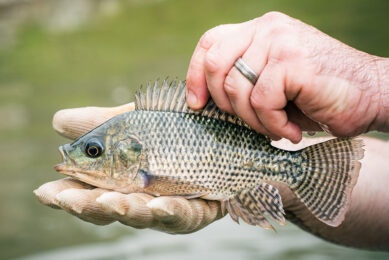Aquaculture should be better in marketing
Tell your story but be different was the message from restaurant marketing specialist Aaron Allen to around 400 delegates at AquaVision 2008, the international multi-stakeholder aquaculture conference in Norway.
Advisor to more than 4,000 restaurants across the world, Allen gave some
clear marketing advice. Be distinct or be extinct, have a ’cause’ not a
business. Advertising to create an international brand would be too expensive
for most companies so they must use other means. Think like a journalist and
create a unique and interesting story and then the press will write about you
and people will talk about you. Remember the power of the Internet, and that is
more than your website. An entertaining story can move around the world in hours
thanks to the Internet, especially through the phenomenon of social networking
sites. A recent survey most people rate the Internet as a more important source
of information than television, newspapers or word of mouth. That means
companies should keep their websites up to date, with rich and dynamic
content.
A very good product
Speaking in the same
final conference session, Åse Aulie Michelet, CEO of Marine Harvest, made a
similar point: “The aquaculture sector should give more attention to presenting
its products and not focus only on production. We must explain better what it is
and how good it is.” Aquaculture production will grow to meet the demand for
fish but there are sustainability challenges. She presented the Marine Harvest
Qmarine global quality programme as an example of how an industry leader can
establish the way to go in addressing these issues.
WWF wants to
co-operate
Rasmus Hansson of WWF Norway welcomed the Marine Harvest
initiatives as positive. WWF realises working with businesses can create better
results, he said, quoting the WWF Salmon Aquaculture Dialogue as an example.
“But cooperating with a business before it is perfect is risky for WWF as well.
We are between business and the fundamentalists.”
Promising tuna
farming
Hagen Stehr delivered a great example of a unique and
entertaining story of Clearwater Tuna Farming in Australia, which is pioneering
the way to closed cycle aquaculture of southern blue fin tuna. Having raised
tuna broodstock over the past seven years, these 200-kg fish are bringing the
company close to success. Along the way, Stehr’s company created a new species
in aquaculture by using kingfish as a model. It will have 10,000 tonnes of
market-ready kingfish in three years.
Enormous aquaculture
production in China
At the other end of the production spectrum, Dr
Chingchai Lohawatanakel, Vice Chairman of the Charoen Pokphand Group, pointed
out that aquaculture in China produces more than 32 million tonnes of fish a
year, mainly carp. The Chinese are also major consumers of fish and that will
grow. Market research in China shows fish is the fastest growing protein option
in low, middle and high income groups, with increases exceeding 100% in all
three categories. Turning to pangasius in Vietnam, he declared it the low cost
fish of the future for low income earners. The environment offered by the Mekong
river means fish farmers there can produce 360 tonnes of fish per hectare per
year; ten times the productivity of Chinese carp and currently farmers only use
2% of the potential production area. He then described the investments Charoen
Pokphand is making to develop sustainable white shrimp farming, delivering
uniform size and quality shrimps from enormous production facilities in
Thailand.
Cry for new knowledge
“Innovation is
essential for future food security,” said Wout Dekker, CEO of animal nutrition
company Nutreco, when closing the conference. “At this AquaVision the cry for
new knowledge has been louder than in any previous AquaVision or Agri Vision
conference. We are in a period of ‘agflation’ with high food prices and volatile
commodity markets and agflation will drive innovation.
“While there have
been common themes running through previous conferences, today the themes are
dominated by the realisation that with a growing world population of people with
more money to spend and limited world resources, food security is no longer a
given. To feed the world, we need innovation. More than that, the companies that
will succeed are those that ensure food safety and sustainability.”
Additionally, he said they must follow the advice of Aaron Allen to
“differentiate their products, position and market them
effectively.”
Related website:
AquaVision 2008
Related folder:
Dossier
AllAbout Aquafeed











